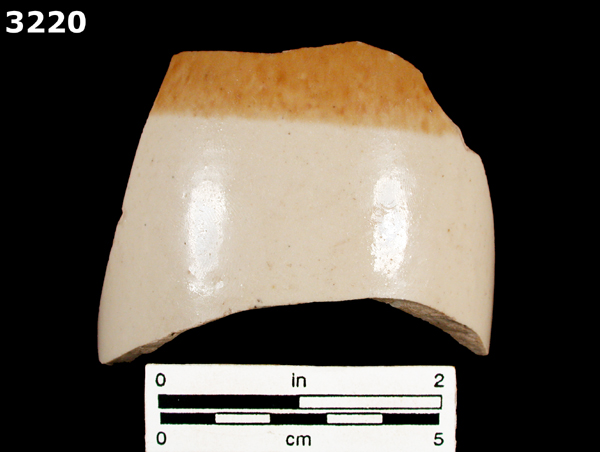View all examples of STONEWARE, BRISTOL GLAZE GINGER BEER BOTTLE

| Type Name: | STONEWARE, BRISTOL GLAZE GINGER BEER BOTTLE |
| Type Index: | STONEWARE |
| Production Origin: | ENGLAND and UNITED STATES |
| Date Range: | 1835-1900 |
| Defining Attributes: |
Vitreous light grey or grayish-white stoneware paste. Thick, very shiny surface glaze in off white and mustard gold. Bottles are typically dipped vertically to produce a two-toned effect, with off white on the top or bottom half, and mustard on the other. The white slipped half may have black printed inscriptions identifying the manufacturer or the product. |
| Vessel Forms: |
BOTTLE |
| Comments: | Bristol glazing was developed in Bristol, England in 1835, began to be used by American stoneware potters soon afterwards. It soon replaced much of the brown salt glazed stoneware that was used for utilitarian wares. Bristol Glaze is a feldspathic glaze-slip using zinc oxide, that requires only a single firing. It is sometimes called "double glazed ware" because the two-toned effect required dipping each vessel in the glaze two times. Although Bristol two-tone pottery is most commonly reported in bottle forms from American archaeological sites, the glaze is also found on stoneware crocks, jars and other utilitarian items. |
| Published Definitions: | Greer 1981 Noel Hume 2001:324 |
View all examples of STONEWARE, BRISTOL GLAZE GINGER BEER BOTTLE